1. The Science Behind HBOT and Aging
Hyperbaric Oxygen Therapy (HBOT) involves breathing pure oxygen in a pressurized chamber, which boosts blood oxygen levels, promotes tissue healing, and supports cell regeneration, contributing to anti-aging effects. As per Custom Market Insights, the global HBOT market is projected to grow to 7.35 billion by 2032, with a CAGR of 7.5% from 2023 to 2032, due to its ability to defend the body against bacteria and harmful organisms.
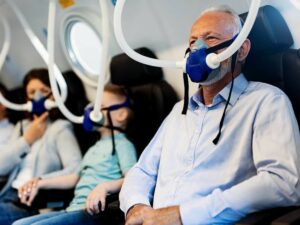
Studies have shown that HBOT can enhance the body’s ability to fight inflammation, a key factor in the aging process. By reducing inflammation, HBOT helps in preserving cell health and functionality, which is essential in maintaining youthfulness and vibrance. It’s fascinating how a simple element like oxygen can have such a significant impact on our body’s aging process.
2. Cognitive Benefits of HBOT in Aging Populations
After exploring the science behind HBOT and aging, the focus turns to the specific cognitive benefits it offers to aging populations. Below are the key cognitive benefits of HBOT in aging populations:
Enhanced Memory Retention
Increases in oxygen levels can improve the brain’s ability to store and recall information. This is particularly beneficial for aging individuals, as it helps in retaining life’s precious moments and knowledge acquired over the years. Enhanced memory can significantly improve quality of life and daily functioning in older adults.

Improved Focus and Concentration
Improved blood circulation to the brain can enhance concentration and extend the ability to stay focused for longer durations. This improvement is crucial for maintaining productivity and engagement in various activities, whether it’s reading, working, or pursuing hobbies. Enhanced focus can lead to a more fulfilling and active lifestyle.
Reduction in Age-Related Cognitive Decline
Regular HBOT sessions can help in slowing down the natural cognitive decline associated with aging. By preserving cognitive functions, individuals can maintain their independence and decision-making abilities longer. This aspect of HBOT is especially valuable in promoting a sense of dignity and self-reliance in the elderly.

Increased Neuroplasticity
Enhanced brain function and the ability to adapt to new learning and experiences. This increased neuroplasticity allows the aging brain to stay flexible and adaptable, which is essential for learning new skills and adapting to changes in the environment. It also plays a role in recovery from brain injuries and strokes, making it a vital component in elderly care.

3. Costs and Accessibility of HBOT Treatments
Moving from the cognitive benefits of HBOT in aging populations, it’s vital to consider its cost and accessibility, ensuring that these treatments are within reach for those who need them. Here are its key aspects:
Affordability and Insurance Coverage
The cost of HBOT treatments varies significantly, a question often asked is, How Much Does Hyperbaric Oxygen Therapy Cost? The range starts from over $125 at HBOT clinics to more than $1,000 per session at large medical hospitals. Insurance coverage for HBOT can be selective, often depending on the medical condition being treated. Patients should consult with their insurance providers and treatment centers to understand coverage options and out-of-pocket expenses.

Geographic Accessibility
The availability of HBOT facilities is growing, but they are not evenly spread out. More of these facilities are found in cities, which can make it harder for people in rural or less developed areas to get HBOT treatment. However, efforts are being made to expand HBOT services to a wider range of locations, enhancing accessibility.
Demographic Reach
HBOT’s demographic reach is expanding, catering not just to the aging population but also to a broader range of age groups and health conditions. This expansion is driven by growing awareness and the versatility of HBOT in treating various illnesses. Accessibility across different demographics is key to ensuring the benefits of HBOT are widely available.

Technological Advancements Reducing Costs
Recent technological advancements in HBOT enhance cost-efficiency and accessibility. Innovations in chamber design and oxygen delivery lower operational expenses, expanding its affordability and reach. OxygenArk is at the forefront of these advancements, playing a key role in making HBOT more accessible and affordable.
4. HBOT Treatment Process Explained
Transitioning from the costs and accessibility, understanding the HBOT treatment process is crucial for appreciating its value and efficacy in anti-aging therapies. Here are the key stages involved:
Step#1 Initial Consultation and Assessment
Before beginning HBOT, patients undergo a thorough initial consultation and assessment to determine their suitability for the treatment. This step involves a detailed medical history review and a discussion of specific health goals and concerns related to aging. The assessment ensures that HBOT is tailored to individual needs, maximizing its effectiveness and safety.
Step#2 Pre-Treatment Medical Evaluation
Following the consultation, a pre-treatment medical evaluation is conducted. Evaluations include physical examinations, blood tests, and other diagnostic procedures to ensure the patient’s readiness for HBOT. It helps in identifying any underlying conditions that might affect the treatment’s effectiveness or safety.
Step#3 Customized Treatment Planning
Based on the assessment and medical evaluation, a customized HBOT treatment plan is developed. This plan considers the patient’s unique health needs, aging goals, and the specific outcomes they hope to achieve through HBOT. It outlines the frequency, duration, and intensity of the HBOT sessions.
Step#4 Orientation and Education
Before starting the actual treatment, patients undergo an orientation and education session. This step involves briefing the patient about what to expect during HBOT, how to prepare for each session, and the importance of adhering to the treatment plan. It also addresses any questions or concerns the patient might have.
Step#5 The HBOT Sessions
During this phase, patients receive HBOT sessions as per their treatment plan. Each session involves being in a hyperbaric chamber, breathing pure oxygen at increased pressures. These sessions are painless, lasting 60 to 90 minutes and are designed to be comfortable. OxygenArk offers advanced chambers that enhance the overall experience, ensuring safety, comfort, and effectiveness in each session.
Step#6 Monitoring and Adjusting Treatment
Throughout the treatment, the patient’s response to HBOT is closely monitored. Adjustments to the treatment plan are made as needed based on the patient’s progress and feedback. This guarantees the treatment’s effectiveness and for making any necessary modifications for best results.
Step#7 Post-Treatment Evaluation and Follow-Up
After completing the HBOT sessions, a post-treatment evaluation is conducted. This evaluation assesses the outcomes of the treatment and determines any additional steps or follow-up care required. It’s also an opportunity to measure the improvement in the patient’s aging-related symptoms and overall health.
Step#8 Integrating HBOT with Other Therapies
For comprehensive anti-aging results, HBOT is often integrated with other therapies and wellness practices. This combined approach enhances the overall effectiveness of the treatment, addressing various aspects of aging together. Combining HBOT with complementary therapies ensures a comprehensive approach to reversing the signs of aging.
5. Comparing HBOT to Other Anti-Aging Treatments
Building on the insights from the HBOT treatment process, it’s essential to understand how HBOT stands in relation to other anti-aging therapies. Here are the key comparisons:
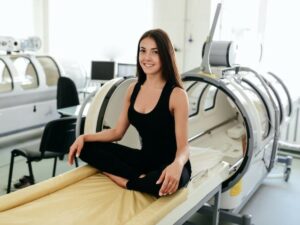
HBOT vs. Pharmaceutical Anti-Aging Drugs
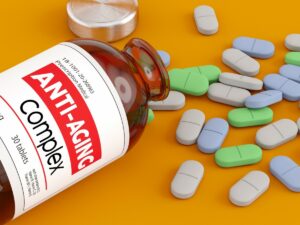
HBOT presents a natural alternative to pharmaceutical anti-aging drugs, which often rely on hormonal or chemical interventions to reduce signs of aging. While these drugs target specific aging symptoms, they can come with side effects and require careful monitoring. In contrast, HBOT offers a comprehensive approach, enhancing overall cellular health with minimal risk.
HBOT vs. Cosmetic Surgery
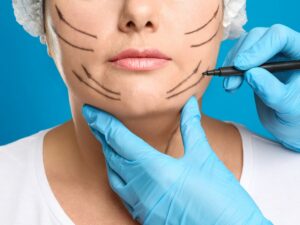
Cosmetic surgery offers immediate and visible anti-aging results, often focusing on reducing wrinkles or sagging skin. However, it includes medical procedures, potential risks, and requires significant recovery time. HBOT, on the other hand, offers a gentle approach to enhance skin quality and overall health without surgery-related risks.
HBOT vs. Topical Anti-Aging Creams

Topical creams are a popular, gentle anti-aging solution, primarily focusing on surface-level skin improvements. These creams can hydrate and improve skin appearance temporarily but do not address the root causes of aging. HBOT, in contrast, works from within to rejuvenate cells and tissues, offering more significant and lasting anti-aging benefits.
HBOT vs. Dietary Supplements

Dietary supplements for anti-aging often contain antioxidants and vitamins to combat aging at a cellular level. While beneficial, their efficacy can be limited by factors like absorption rates and individual metabolism. HBOT enhances oxygen delivery to cells, providing a more direct and often more effective approach to combating aging symptoms.
HBOT vs. Laser and Light Therapies
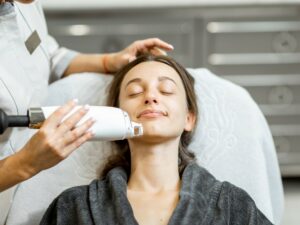
Laser and light therapies target specific skin issues like wrinkles, age spots, and texture irregularities. These treatments can be effective for surface-level skin rejuvenation but typically require multiple sessions and maintenance. HBOT offers a broader approach, improving not just skin appearance but also overall physiological function, which can contribute to a more youthful state.
6. Potential Risks and Limitations of HBOT in Anti-Aging
After comparing HBOT to other treatments, it’s crucial to understand its potential risks and limitations to ensure informed decisions and safe practices in its application. Here are the key aspects to consider:
Understanding Possible Side Effects
HBOT is generally safe, but like any medical treatment, it carries some risks. Potential side effects include mild discomfort due to ear pressure, temporary changes in vision, and, in rare cases, oxygen toxicity. Awareness and management of these side effects are essential for a safe HBOT experience.

Patient Suitability and Exclusions
Not everyone is a suitable candidate for HBOT. Individuals with certain medical conditions, like untreated pneumothorax or certain types of ear problems, may not be eligible for the treatment. Consultation with a healthcare provider is crucial to determine suitability for HBOT.
Limitations in Treatment Scope
HBOT primarily targets aging-related cellular and tissue damage, but its efficacy may vary across different aging symptoms. It’s not a one-size-fits-all solution for age-related problems. It’s most effective when used alongside a comprehensive approach to health. Users should have realistic expectations about the outcomes of HBOT in anti-aging.
Interaction with Certain Medications
HBOT can interact negatively with certain medications, particularly chemotherapy drugs and certain antibiotics. For instance, when HBOT is combined with drugs like doxorubicin, which is commonly used in chemotherapy, it can change the way these medications work. Patients must disclose their medication history to ensure safe and effective treatment planning.
|
Medication Type
|
Interaction with HBOT
|
Recommendations for Patients
|
|
Chemotherapy Drugs
|
HBOT may negatively interact with chemotherapy drugs, altering their effectiveness. For example, doxorubicin, a common chemotherapy drug, may be affected when used in conjunction with HBOT.
|
Patients undergoing chemotherapy should disclose their treatment history to healthcare providers before HBOT. This allows for personalized treatment planning and ensures the safety and efficacy of both therapies.
|
|
Certain Antibiotics
|
Interaction with certain antibiotics may occur during HBOT, potentially impacting their efficacy. Patients should inform healthcare providers about antibiotic usage to avoid adverse effects.
|
It is crucial for patients on antibiotics to communicate their medication history before undergoing HBOT. This information guides healthcare professionals in adjusting treatment plans to prevent negative interactions.
|
7. The Future of HBOT in Anti-Aging
While acknowledging the potential risks and limitations of HBOT, it’s equally important to look ahead at the evolving landscape of this therapy in anti-aging. Here are the key areas to look at:
Ongoing Research and Developments
Future research in HBOT is expected to uncover new anti-aging mechanisms and targeted protocols by exploring enhanced oxygenation’s impact on cellular pathways. Understanding HBOT’s molecular effects is key to advancing its anti-aging applications.

Integration with Personalized Medicine
In the evolving field of personalized medicine, HBOT treatments are becoming tailored to individual genetic profiles and aging patterns. This enhances the effectiveness of HBOT, maximizing rejuvenation benefits for each patient. Personalization will transform HBOT from generalized to highly individualized anti-aging therapy.
Expansion of Treatment Indications
HBOT is expanding its use to include more age-related conditions, influenced by emerging scientific evidence. This expansion will likely encompass areas like neurodegeneration, skin rejuvenation, and muscle recovery. Expanding into different areas will position HBOT as a more comprehensive solution in the anti-aging healthcare sector.

Technological Innovations in HBOT
Technological advancements are expected to revolutionize the HBOT experience, making it more efficient, comfortable, and accessible. For example, innovations may include more advanced chamber designs, enhanced oxygen delivery systems, and smarter monitoring tools. These advancements will not only improve the patient experience but also increase the efficacy of HBOT treatments.
Conclusion
HBOT stands as a revolutionary step forward in the journey towards longevity, offering a unique blend of science and wellness. This guide has provided a thorough understanding of HBOT’s benefits and applications, empowering you in making informed decisions about incorporating this advanced therapy into your services.
If you are seeking to integrate this innovative HBOT treatment into your health services, OxygenArk stands as a premier partner. Contact us for tailored solutions to further enhance your service offerings.
















